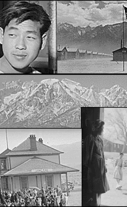About the Collection
This collection focuses on the internment of Japanese-Americans during World War II. The collection includes 62 documents totaling 911 pages covering the years 1942 through 1962. Supporting materials include oral history transcripts and photographs courtesy of the National Archives.
